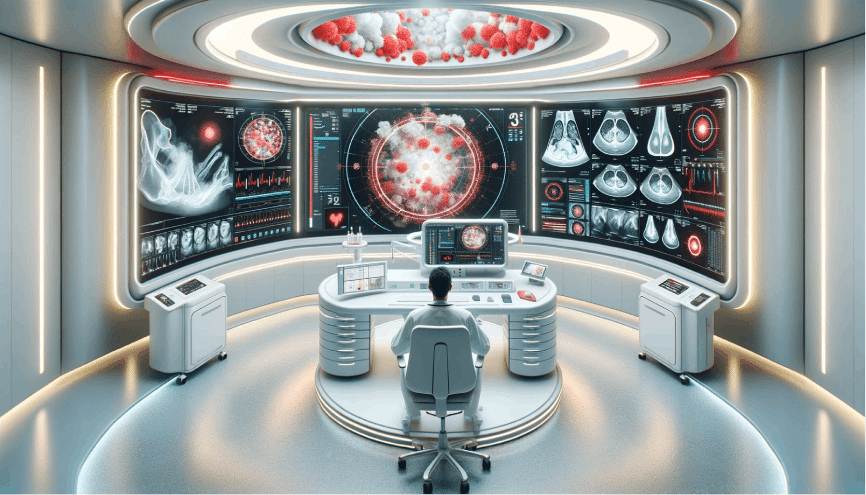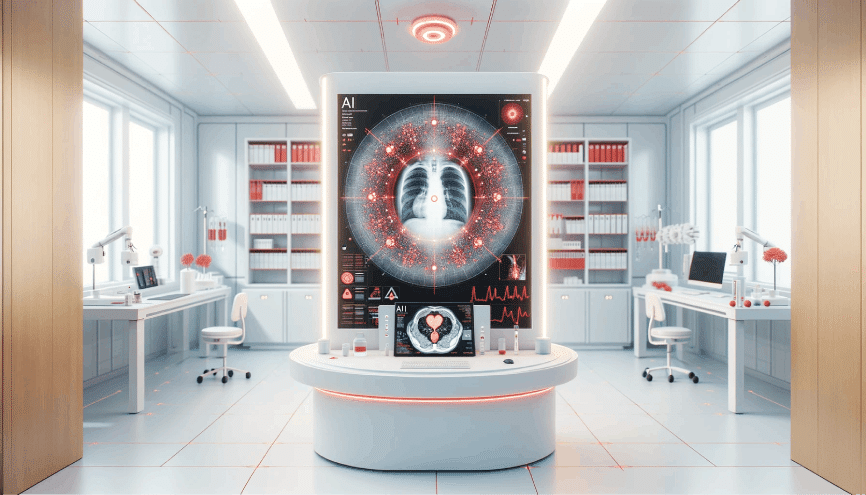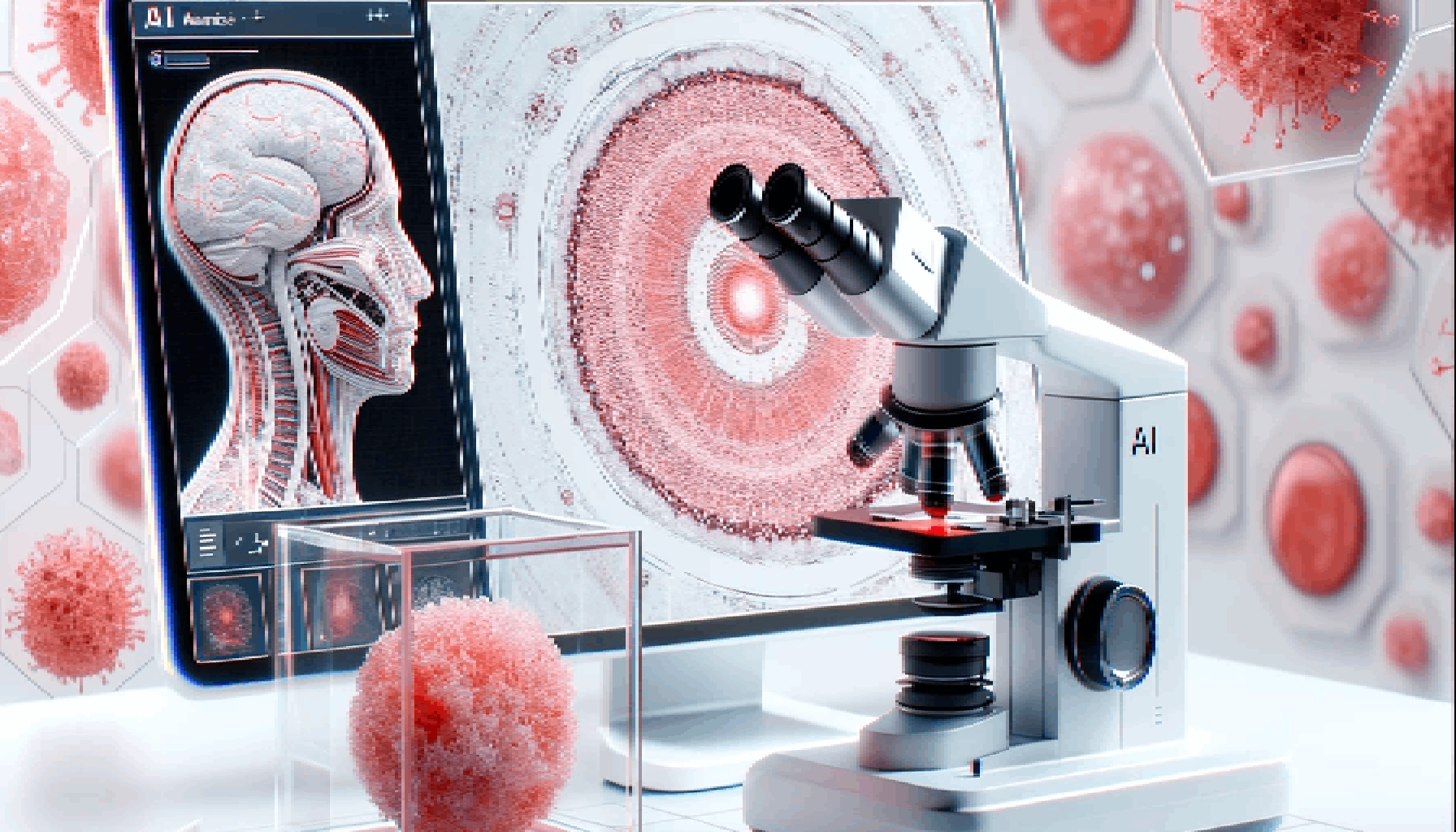Discover how AI-powered medical imaging technologies are revolutionizing diagnostics and improving patient care.
AI Transforming Medical Diagnostics
As advancements in technology continue to shape various industries, healthcare is no exception. In recent years, the rise of AI-powered medical imaging technologies has revolutionized diagnostics, providing accurate and timely results for better patient outcomes.
Understanding AI and Medical Imaging
AI, or Artificial Intelligence, refers to computer systems that are designed to perform tasks that typically require human intelligence. When applied to medical imaging, AI algorithms analyze images and extract meaningful information, aiding in the detection and diagnosis of various medical conditions.

One of the key advantages of utilizing AI in medical imaging is its ability to process images at a speed and scale that surpasses human capabilities. This rapid analysis can lead to quicker diagnoses and treatment plans, ultimately improving patient outcomes and reducing healthcare costs. Hire data offshore scientists for healthcare teams to ensure that medical facilities can leverage global expertise to harness the full potential of AI in medical imaging, optimizing both efficiency and effectiveness in patient care.
The Intersection of AI and Medical Imaging
At the intersection of AI and medical imaging lies a realm of endless possibilities. By combining the power of machine learning and computer vision, AI algorithms can process vast amounts of medical images to identify patterns, anomalies, and early signs of diseases.
Moreover, the integration of AI in medical imaging has paved the way for personalized medicine. By tailoring treatment plans to individual patients based on AI-generated insights from their medical images, healthcare providers can deliver more targeted and effective care.
The Evolution of AI in Medical Imaging
The use of AI in medical imaging has come a long way. Initially, AI algorithms were limited in their capabilities, requiring extensive manual data annotation. However, with the advent of deep learning, AI systems can now learn from large volumes of labeled medical images, continuously improving their accuracy and performance.
Furthermore, the evolution of AI in medical imaging has sparked collaborations between computer scientists, radiologists, and healthcare professionals. This interdisciplinary approach has led to the development of innovative imaging techniques and diagnostic tools that have revolutionized the field of medical imaging.
The Impact of AI on Diagnostic Accuracy
One of the primary benefits of AI-powered medical imaging technologies is the enhancement of diagnostic accuracy.
AI algorithms can analyze medical images with incredible precision, often outperforming human radiologists. By quickly and accurately identifying abnormalities, AI algorithms aid in early detection, leading to timely interventions and improved patient outcomes. This level of precision is particularly crucial in fields like oncology, where early detection can significantly impact treatment success rates and patient survival.
Furthermore, AI technologies can assist in personalized medicine by analyzing vast amounts of patient data to identify patterns and correlations that may not be immediately apparent to human diagnosticians. This can lead to more tailored treatment plans and better outcomes for individual patients.
Interested in more data and use case about AI in healthcare?
Find out a lot of useful information in the article: “The Role of AI in Drug Discovery & Pharmaceutical Development”
Enhancing Precision with AI
AI algorithms can analyze medical images with incredible precision, often outperforming human radiologists. By quickly and accurately identifying abnormalities, AI algorithms aid in early detection, leading to timely interventions and improved patient outcomes.
Moreover, the use of AI in diagnostics is not limited to medical imaging. Natural language processing algorithms can sift through vast amounts of textual data in electronic health records to assist clinicians in making accurate diagnoses. By analyzing patient histories, symptoms, and test results, AI can provide valuable insights that support healthcare providers in delivering optimal care.
Reducing Human Error in Diagnostics
Diagnostic errors can have severe consequences for patients. AI-powered medical imaging technologies help minimize these errors by providing a second layer of analysis. Algorithms can double-check radiologists’ findings, ensuring that no abnormalities are missed.
Additionally, AI can contribute to the standardization of diagnostic processes across healthcare systems. By following evidence-based algorithms and guidelines, AI systems can help reduce variability in diagnoses, leading to more consistent and reliable healthcare outcomes for patients regardless of their geographic location or the specific healthcare provider they visit.
The Role of AI in Radiology
Radiology is one of the branches of medicine that has been significantly impacted by AI-powered diagnostics.

AI technology has brought about a paradigm shift in the field of radiology, offering innovative solutions to complex medical imaging challenges. By harnessing the power of machine learning and deep neural networks, AI algorithms can analyze vast amounts of imaging data with unprecedented speed and accuracy.
Revolutionizing Radiology with AI
AI algorithms have the potential to revolutionize radiology practice. By swiftly analyzing medical images and highlighting potential areas of concern, radiologists can prioritize their attention and make more accurate diagnoses, ultimately improving patient care.
AI also speeds up radiology scanning. Traditionally, the MRI examination of a medical case takes 30-60 min, which causes a lot of discomfort to patients. With AI, this process becomes considerably shorter.
Moreover, AI can assist radiologists in detecting patterns and trends that may not be immediately apparent to the human eye. This augmented intelligence can lead to earlier detection of diseases, such as cancer, and facilitate timely interventions, significantly impacting patient outcomes.
Future Prospects of AI in Radiology
The future of AI in radiology is promising. As AI algorithms continue to learn and adapt, they will become even more adept at identifying subtle abnormalities and predicting patient outcomes. This has the potential to further enhance diagnostic accuracy and streamline radiologists’ workflows.
Furthermore, the integration of AI into radiology holds the promise of personalized medicine, where treatment plans can be tailored to individual patients based on their unique characteristics and genetic makeup. This precision medicine approach has the potential to revolutionize healthcare delivery, offering more effective and targeted treatments for patients.
AI in Pathology and Histology
While AI has made significant strides in radiology, its application in pathology and histology is equally promising.
Advancements in artificial intelligence (AI) have revolutionized the field of medicine, particularly in the realm of pathology and histology. Pathologists and histopathologists are now able to harness the power of AI to enhance their diagnostic capabilities and improve patient outcomes.
AI’s Contribution to Pathology
Pathology plays a critical role in disease diagnosis, prognosis, and treatment planning. AI-powered algorithms can analyze microscopic images and assist pathologists in identifying abnormalities, reducing the risk of diagnostic errors and optimizing treatment strategies.
AI not only aids in the identification of diseases but also helps pathologists in predicting disease progression and response to treatment. By analyzing vast amounts of data with incredible speed and accuracy, AI algorithms can provide valuable insights that may have otherwise been overlooked.
The Potential of AI in Histology
Histology, the study of tissue structure and function, can greatly benefit from AI-powered diagnostics. By leveraging AI algorithms, histopathologists can quickly analyze tissue samples, leading to faster and more accurate diagnoses.
Furthermore, AI can assist in the identification of specific biomarkers within tissue samples, aiding in the personalized treatment of patients. This level of precision medicine, made possible by AI technology, has the potential to revolutionize the way diseases are diagnosed and treated.
Ethical Considerations in AI-Powered Diagnostics
As AI-powered medical imaging technologies continue to advance, ethical considerations also come to the forefront.

Balancing AI Advancements with Patient Privacy
AI algorithms rely on vast amounts of patient data for training and validation. Balancing the benefits of AI with patient privacy rights and data protection is crucial. Striking the right balance ensures patient trust and the ethical use of AI in healthcare.
The Ethical Dilemma of AI in Healthcare
AI-powered medical imaging raises various ethical dilemmas. For example, the reliance on AI algorithms may lead to decreased human involvement in diagnostics, raising concerns about the eroding role of healthcare professionals. Addressing these dilemmas requires careful consideration and ongoing dialogue among healthcare providers, technology developers, and regulatory bodies.
Moreover, the integration of AI in diagnostics also brings to light the issue of algorithm bias. AI algorithms are only as good as the data they are trained on, and if the data is biased, it can lead to inaccurate or unfair outcomes. Recognizing and mitigating algorithmic bias is essential to ensure that AI-powered diagnostics provide equitable and reliable results for all patients, regardless of their background or demographics.
Additionally, the rapid pace of technological advancement in AI-powered diagnostics and the strategic move to hire software development teams specializing in healthcare applications raises questions about the regulatory framework needed to oversee these innovations. Ensuring that AI technologies in healthcare adhere to established ethical guidelines and legal standards is crucial to prevent misuse or unintended consequences. Collaborative efforts between policymakers, healthcare professionals, and technology experts are essential to develop robust regulatory frameworks that promote innovation while safeguarding patient rights and well-being.
Therefore, countries now discuss and develop various approaches in how to solve these issues. For example, the European Union has recently passed the first in the history AI Act, which aims to restrict unethical AI uses. In terms of high-risk AI applications, like healthcare,stringent rules are applied. For example, the act introduces the high-level supervision on the quality of data used to train AI systems, as well as the 100% human oversight and transparency of healthcare-related AI trainings. Being the first legal document of this type, the EU AI Act is far from being the last. Currently, the United States and other countries are developing AI-regulating legislature.
Interested in developing an AI-based healthcare solution?
Contact eNest for a free consultation and advice. Our company is a leader in artificial intelligence excellence, with years of experience in AI and data mining. By contacting us, you will get a free assessment of your business idea, receive the calculation of your cost and timeline. Book a call now!
Have a question?
Speak to Data Scientist
 Jagdeep Chawla
Jagdeep ChawlaMS in Data Science
NorthWestern Univeristy, Illinois
MS in Data Science
NorthWestern Univeristy, Illinois




